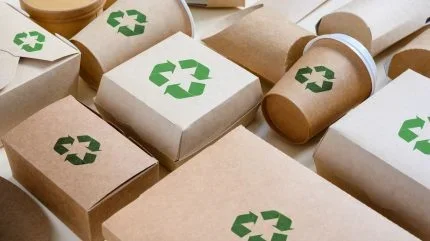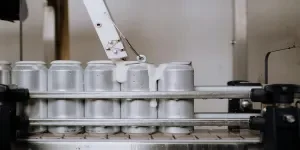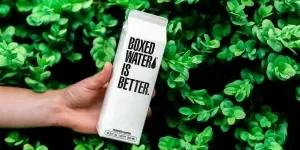Packaging designs are increasingly prioritising recyclability, from the selection of sustainable materials to innovative designs that simplify the recycling process.

In recent years, the global focus on sustainability has spurred a significant transformation in the packaging industry.
As environmental concerns continue to grow, companies are under increasing pressure to reduce their environmental footprint. One of the most effective ways to achieve this is by designing packaging with recyclability at its core.
The shift towards recyclable packaging designs is not just a trend but a necessity in the modern market.
Packaging professionals are now challenged to innovate in ways that align with eco-friendly practices while meeting the demands of both consumers and regulatory bodies.
The rise of sustainable materials
The foundation of recyclable packaging begins with the selection of materials. Traditionally, packaging has relied heavily on plastics, which, while versatile and durable, pose significant environmental challenges.
Plastics are notoriously difficult to recycle and often end up in landfills or the ocean, contributing to pollution and harming wildlife. In response to these issues, the packaging industry has begun to shift towards more sustainable materials.
One of the most promising materials is paper, which is highly recyclable and biodegradable. Paper-based packaging is now being developed for a wide range of products, from food items to electronics.
The versatility of paper, combined with advancements in its strength and durability, makes it a viable alternative to plastic.
Brands are also exploring plant-based plastics, which, unlike traditional petroleum-based plastics, are made from renewable resources and are often compostable.
Glass and metal are other materials gaining traction in the recyclable packaging space. Glass, although heavier and more energy-intensive to produce, is infinitely recyclable without loss of quality.
Similarly, metals such as aluminium can be recycled repeatedly, making them a sustainable choice for packaging beverages, food, and personal care products.
Designing for recycling efficiency
Creating packaging that is truly recyclable goes beyond just choosing the right materials; it also involves thoughtful design. Packaging professionals are now focusing on simplifying the design process to make recycling easier for consumers.
This includes reducing the number of different materials used in a single package, as mixed-material packaging can be difficult to recycle. For example, a typical beverage carton might consist of paper, plastic, and aluminium layers, which require separation before recycling.
To address this, companies are developing mono-material packaging, where the entire package is made from a single material, simplifying the recycling process.
Labelling is another critical aspect of design that can enhance recyclability. Clear and concise recycling instructions on packaging help consumers understand how to dispose of products correctly.
Some companies are even incorporating digital solutions, such as QR codes, which provide detailed recycling information when scanned with a smartphone.
The design also extends to the shape and size of the packaging. Compact, stackable designs not only reduce the carbon footprint during transportation but also streamline the recycling process.
Smaller packaging sizes reduce material use and waste, while designs that are easy to disassemble encourage consumers to separate components for recycling.
Meeting consumer expectations and regulations
As the demand for sustainable packaging grows, consumers are becoming more discerning in their choices. They are increasingly favouring brands that prioritise environmental responsibility, which has led to recyclability becoming a key factor in purchasing decisions.
Packaging professionals must now balance functionality, cost, and sustainability to meet these evolving expectations.
Brands that embrace recyclable packaging are not only appealing to eco-conscious consumers but are also preparing for stricter environmental regulations.
Governments around the world are implementing policies aimed at reducing plastic waste and promoting recycling. The European Union, for example, has set ambitious targets for packaging recyclability, requiring all packaging to be reusable or recyclable by 2030.
To comply with these regulations and maintain a competitive edge, companies are investing in research and development to innovate their packaging designs.
This includes experimenting with new materials, improving existing recycling technologies, and collaborating with recycling facilities to ensure that packaging can be effectively processed.
In some cases, companies are adopting extended producer responsibility (EPR) schemes, where they take on the responsibility for the entire lifecycle of their products, including the disposal and recycling phases.
This approach not only fosters a circular economy but also aligns with the growing consumer demand for transparency and accountability in corporate practices.
The road ahead for recyclable packaging
The transition to fully recyclable packaging is a complex journey that requires collaboration across the entire supply chain. From material suppliers to manufacturers, retailers, and consumers, every stakeholder has a role to play in driving the shift towards sustainability.
Packaging professionals are at the forefront of this movement, tasked with designing solutions that are not only practical and cost-effective but also environmentally responsible.
Innovations in material science, coupled with advances in recycling technologies, are paving the way for a future where packaging waste is significantly reduced.
As the industry continues to evolve, the focus on recyclability will remain a top priority, driven by both consumer demand and regulatory pressures.
Ultimately, the success of recyclable packaging designs will depend on the industry’s ability to innovate while maintaining the quality and functionality that consumers expect.
By going all-in on recyclability, the packaging industry can make a meaningful contribution to a more sustainable world, one package at a time.
Source from Packaging Gateway
Disclaimer: The information set forth above is provided by packaging-gateway.com independently of Alibaba.com. Alibaba.com makes no representation and warranties as to the quality and reliability of the seller and products. Alibaba.com expressly disclaims any liability for breaches pertaining to the copyright of content.



